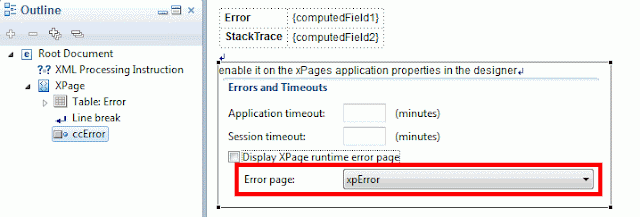I was trying to setup a system to handle “validation” via setup documents
the normal validators which can be set up directly on each field would not help much (or be too much work to implement)
I first tried a simple method: isDocValid returning true/false and adding JSF Messages like following:
String m1 = “summary: ups something went wrong”;
String m2 = “detail: ups something went wrong”;
msg = new FacesMessage(FacesMessage.SEVERITY_ERROR, m1, m2);
facesContext.addMessage(field.getClientId(facesContext), msg);
I would call this methid in the querySaveEvent of the XPage, and it seemed (at least for new documents) to work well.. until I opened a document from a view, and oh wonder (maybe it’s a feature and not a bug) the querySaveDocument event was not even triggered…
That was bad news: I also had a “save as draft” button which would let the user return to the document, but if the validation then would fail?
nope.. I started looking for another way…
so I talked to a guy who has a LOT, I mean a LOOOOOOOOOOOOOT, of JSF experience.
With his help and some from my best friend (google) I did the following:
created a phase listener which logged all events (great for debugging, see those “immediate” events)
a very good article about the JSF phases can be found here:
http://www.ibm.com/developerworks/library/j-jsf3/
a MUST read for any serious XPages developer with little or no JSF experience!!
so then thanks to the phase listener I could see the how all phases process.
and now I immediately had also a way to “plugin” my custom validators properly (more on that in another post)
so here what I did for the phase listener:
Java class:
public class PhaseListener implements javax.faces.event.PhaseListener {
public void beforePhase(PhaseEvent event) {
// log your beforePhase with event.getPhaseId()
}
public void afterPhase(PhaseEvent event) {
// log your afterPhase with event.getPhaseId()
}
}
faces-config.xml:
<lifecycle>
<phase-listener>package.of.your.PhaseListener</phase-listener>
</lifecycle>
now you can add simple additional code in any phase (before or after)
just use something like:
if (event.getPhaseId().equals(PhaseId.PROCESS_VALIDATIONS)) {
// run your code
}
PhaseId. (dot control space) will list all the CONSTANTS to check for any of the phases





